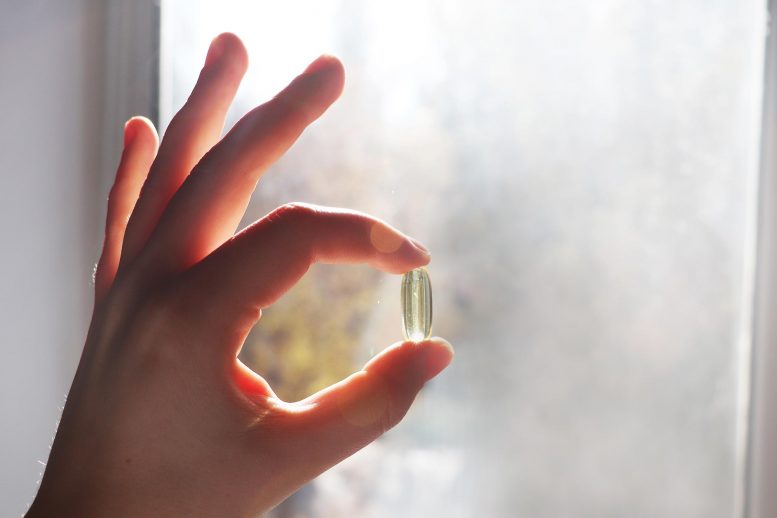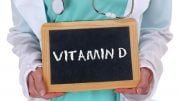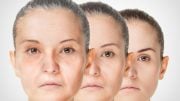
People get vitamin D from sun exposure, foods (such as fatty fish), and supplements.
A recent study has shown a correlation between vitamin D deficiency and COVID-19 severity and mortality.
The study is based on data from Israel’s first two coronavirus waves before vaccines were widely available. It found that people with a vitamin D deficiency are more likely to develop a severe or critical case of COVID-19 compared to people who had sufficient levels of the vitamin in their blood.
Patients with a vitamin D deficiency were 14 times more likely to have a severe or critical case of COVID-19. Additionally, the mortality rate for those with insufficient vitamin D levels was 25.6%, compared with 2.3% among those with adequate levels.

Stuart Cohen, chief of infectious diseases. Credit: UC Davis Health
To learn more about the correlation between vitamin D levels and COVID-19 outcomes, we turned to UC Davis Health’s Chief of Infectious Diseases Stuart Cohen.
What is the link between vitamin D deficiency and COVID-19 infections?
Vitamin D plays a role in the body’s immune system and is known to enhance the function of immune cells. In this case, Vitamin D inhibits some of the inflammation that can make COVID-19 more severe.
What do the latest studies say?
Recent studies suggest that vitamin D deficiency is an independent risk for more severe disease regardless of age or weight. It is also possible that vitamin D deficiency increases the risk of getting infected with COVID-19, however that makes less immunological sense.
Could vitamin D be used to treat patients with COVID-19?
Supplementing vitamin D may play a role in treating patients, but the data is relatively weak at this time. It surely is not a way to treat COVID-19 in and of itself.
What other conditions are linked to vitamin D deficiency?
Vitamin D deficiency is primarily associated with bone health and osteoporosis. There has also been some research that suggests it may also play a role in cardiovascular diseases and has some links to other infections.
How common is vitamin D deficiency?
To analyze this question, we need to look at a combination of what is defined as vitamin D deficiency and insufficiency, which equals about 25% of the population in the United States.
Why do we need vitamin D?
Vitamin D is important for bone health, heart health, and keeping the immune system working appropriately. It is also an important factor in appropriate muscle function.
What are the best sources of vitamin D?
Most vitamin D comes from direct sunlight on the skin. It’s also found in foods such as fatty fish, egg yolks, and fortified dairy products. Mushrooms are one of the few non-animal sources of vitamin D.
How much vitamin D does a person need daily?
Exposure to sunlight triggers vitamin D synthesis in the skin. Adults who do not have regular, effective sun exposure year-round should consume at least 600 to 800 international units. It also should be noted that people with darker pigmented skin are at higher risk for low concentrations of vitamin D.









There is very little vitamin D3 cholecalciferol in food or mutlivitamins. It can be produced in good quantities by UV-B skin exposure, but this is not available to most people all year round. High elevation (not early morning or late afternoon – and summer, not winter) sunshine works well for people with light skin and no sunscreen. However, this induces DNA damage and so raises the risk of skin cancer. People with dark skin and/or sun-avoidant lifestyles, especially far from the equator, produce very little of their own vitamin D3 all year round. For most people, vitamin D3 supplements are the only way of ensuring good 25-hydroxyvitamin D AKA 25(OH)D levels all year round. This is absolutely critical for immune system health, including reducing the risks of self-destructive hyper-inflammatory immune responses.
For 70 kg bodyweight, about 0.125 mg 5000 IU vitamin D3 a day will attain the 50 ng/mL 125 nmol/L 25(OH)D levels in the bloodstream which the immune system needs to function properly. See Quairishi et al. 2014: https://jamanetwork.com/journals/jamasurgery/fullarticle/1782085 .
Vitamin D3 is hydroxylated in the liver over several days to become the long-term stable (several weeks to a month or so half-life) circulating 25(OH)D which the kidneys, immune cells and many other cell types need.
This vitamin D3 intake quantity (a gram every 22 years), and the desired 50 ng/mL 25(OH)D level, are higher than what many MDs think is necessary or even desirable. They are working from outdated and/or discredited research and recommendations, which were perhaps sufficient to supply the kidneys with enough 25(OH)D to produce the stable, very low (~~0.045 ng/mL) circulating 1,25-dihydroxyvitamin D, which acts as a hormone to regulate calcium-phosphate-bone metabolism.
Contrary to what many MDs and even some vitamin D researchers think, this hormonal 1,25-dihydroxyvitamin D does not affect, and is not affected by, the immune system. Immune cells need a good, 50 ng/mL or more, level of 25(OH)D in the bloodstream to feed their vitamin D based autocrine (inside each cell) and paracrine (to nearby cells) signaling system. These signaling systems are unrelated to hormonal signaling. Individual immune cells rely on these systems for their ability to respond to their particular, changing, circumstances.
A comments section is no place for citing all the relevant research. Please read the research articles cited at: “What every MD, immunologist, virologist and epidemiologist should know about vitamin D and the immune system”:https://vitamindstopscovid.info/05-mds/ . Rapid repletion of 25(OH)D in 4 hours or approximately 4 days is described at: https://nutritionmatters.substack.com/p/calcifediol-25-hydroxyvitamin-d-or .